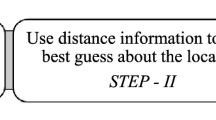Abstract
In recent years, low power and lossy networks (LLNs) have attracted the attention of researchers. They typically operate with strict resource constraints in communication, computation, memory, and energy. Routing protocol for LLNs (RPL) is an ad-hoc distance vector routing protocol for LLNs that adapts IPv6 and runs on top of IEEE 802.15.4 standard. Although RPL was originally designed for static topologies, for many applications mobility support has been a major requirement in LLNs. In addition, part of these applications requires multiple sink nodes rather than one sink node. This is due to the fact that in a data collection wireless sensor network (WSN), only one sink easily leads to a faster energy depletion, more packet loss, higher latency, and smaller network range. Deploying multiple sinks in the network can help solve these problems. This paper focuses on addressing mobility support in RPL with multiple sinks. We propose an enhancement based on signal strength monitoring and rank updating in order to improve the network performance in mobility scenarios where all nodes except sink nodes are moving. This enhancement helps RPL to better cope with mobility scenarios and to make faster decisions on updating next-hop neighbors. Moreover, we propose a dynamic management of control messages in order to reduce the overhead in the network. Simulation results show that our technique outperforms the standard RPL in different network configurations.










Similar content being viewed by others
Notes
Note that due to the nature of wireless signal propagation, in reality, both RSSI thresholds and transmission range are most likely to look like a cloud that changes from one transmission to another. Indeed, in our simulation model we used a probabilistic propagation model to take into account coverage zones instability.
References
Bouaziz M, Rachedi A (2016) A survey on mobility management protocols in Wireless Sensor Networks based on 6LoWPAN technology. Comput Commun 74:3–15
Rawat P, Singh KD, Chaouchi H, Bonnin JM (2014) Wireless sensor networks: a survey on recent developments and potential synergies. J Supercomput 68(1):1–48
Winter T et al (2012) RPL: IPV6 routing protocol for low-power and lossy networks. IETF RFC 6550
Levis P, Clausen TH (2011) The trickle algorithm
Chatterjee P, Das N (2015) Multiple sink deployment in multi-hop wireless sensor networks to enhance lifetime. In: Applications and innovations in mobile computing (AIMoC), pp 48–54
Dandekar DR, Deshmukh PR (2013) Energy balancing multiple sink optimal deployment in multi-hop wireless sensor networks. In: Advance computing conference (IACC), pp 408–412
Jain TK, Saini DS, Bhooshan SV (2015) Lifetime optimization of a multiple sink wireless sensor network through energy balancing. Journal of Sensors, vol 2015, Article ID 921250, pp 1–6
Peixoto JPJ, Costa DG (2017) Wireless visual sensor networks for smart city applications: a relevance-based approach for multiple sinks mobility. Futur Gener Comput Syst 76:51–62
Ko J, Chang M (2015) Momoro: providing mobility support for low-power wireless applications. IEEE Syst J 9(2):585–594
Fotouhi H, Zúñiga M, Alves M, Koubâa A, Marrón P (2012) Smart-hop: a reliable handoff mechanism for mobile wireless sensor networks. In: European Conference on Wireless Sensor Networks. Springer, Berlin, pp 131–146
Fotouhi H, Moreira D, Alves M (2015) mRPL: boosting mobility in the internet of things. Ad Hoc Networks 26:17–35
Gara F, Saad LB, Hamida EB, Tourancheau B, Ayed RB (2016) An adaptive timer for RPL to handle mobility in wireless sensor networks. In: Wireless communications and mobile computing conference (IWCMC), pp 678–683
Cobârzan C, Montavont J, Noel T (2015) Integrating mobility in RPL. In: European conference on wireless sensor networks. Springer International Publishing, pp 135–150
El Korbi I, Brahim MB, Adjih C, Saidane LA (2012) Mobility enhanced RPL for wireless sensor networks. In: Network of the future (NOF), pp 1–8
Barcelo M, Correa A, Vicario JL, Morell A, Vilajosana X (2016) Addressing mobility in RPL with position assisted metrics. IEEE Sensors J 16(7):2151–2161
Carels D, Derdaele N, De Poorter E, Vandenberghe W, Moerman I, Demeester P (2014) Support of multiple sinks via a virtual root for the RPL routing protocol. EURASIP J Wirel Commun Netw 2014(91):1–23
Farooq MO, Sreenan CJ, Brown KN, Kunz T (2015) RPL-based routing protocols for multi-sink wireless sensor networks. In: Wireless and mobile computing networking and communications (WiMob), pp 452–459
Murugan K, Pathan ASK (2016) Prolonging the lifetime of wireless sensor networks using secondary sink nodes. Telecommunication Systems 62(2):347–361
Safa H, Moussa M, Artail H (2014) An energy efficient Genetic Algorithm based approach for sensor-to-sink binding in multi-sink wireless sensor networks. Wirel Netw 20(2):177–196
Gaddour O, Koubâa A, Rangarajan R, Cheikhrouhou O, Tovar E, Abid M (2014) co-RPL: RPL routing for mobile low power wireless sensor networks using Corona mechanism. In: Industrial embedded systems (SIES), pp 200–209
Wang J, Chalhoub G, Tall H, Misson M (2017) Routing protocol enhancement for mobility support in wireless sensor networks. In: International conference on Ad-Hoc networks and wireless. Springer, Cham, pp 262–275
Wang J, Chalhoub G, Misson M (2017) Mobility support enhancement for RPL. In: Performance evaluation and modeling in wired and wireless networks (PEMWN), pp 1–6
Wang J, Chalhoub G (2017) Study of mobility enhancements for RPL in convergecast scenarios. Future Internet 9(4):1–14. 86
Osterlind F, Dunkels A, Eriksson J, Finne N, Voigt T (2006) Cross-level sensor network simulation with COOJA. In: IEEE LCN, pp 641–648
Funding
This research was conducted with the support of the European Regional Development Fund (FEDER) program of 2014–2020 and the region council of Auvergne.
Author information
Authors and Affiliations
Corresponding author
Rights and permissions
About this article
Cite this article
Wang, J., Chalhoub, G. Mobility support enhancement for RPL with multiple sinks. Ann. Telecommun. 74, 311–324 (2019). https://doi.org/10.1007/s12243-018-0689-5
Received:
Accepted:
Published:
Issue Date:
DOI: https://doi.org/10.1007/s12243-018-0689-5




